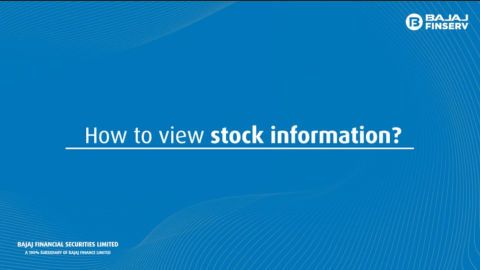Stock Trading vs Investing
Stock trading and investing are simply two different methods through which a trader or investor is looking to gain returns on his investment. These are completely different methods, however, with the same objective in mind to get more returns on investments. The key difference between the two is the time frame. Investing is done over a long period whereas trading is for a shorter time frame.
Trading
Trading is a method that involves buying and selling stocks and other financial instruments like futures & options, ETFs, etc. for a short period. A trader may take multiple trades in a week or a day. A trader will buy and sell shares frequently by analyzing the technical charts of a stock. This involves understanding short-term patterns along with various support and resistance levels to enter and exit the positions. The stock market and the options market are where a trader would usually trade.
Trading styles based on time intervals
- Swing Trading: The time interval for this can be multiple days or weeks.
- Position Trading: A position trader may hold on to a position or trade for several weeks or an extended period depending on his analysis.
- Day-Trading: You would have heard the term intraday. This comes from the style of trading where a trader will hold the position only for a specific day.
- Scalp Trading: A scalp trader will take a trade for a few minutes or sometimes even for seconds.
Additional Read: How to start trading online?
Investing
Investing is a method that involves patience. An investor stays invested in stocks or other financial instruments for years and decades. Investing involves buying shares of a company and holding them for years to get the benefit of various corporate actions such as dividends, bonuses, buy-backs, etc. by participating in such corporate actions, investors’ capital can be appreciated. An investor is ready to wait out all the ups and downs of the market and believes in the long-term prospect of their investment.
Investors are associated with buying shares. They will buy shares at different times depending on the market situation and the news/ buzz around the stock. Investors prioritize the fundamentals of the stock by analyzing its price-to-earning (P/E) ratio, company fundamentals, management history, and capabilities.
Investing styles
Not all investors buy shares and keep them for years. Investors adopt different styles of investing to grow their investments. Let us understand the different styles of investing.
- Active Investing: An active investor will stay updated with the market and will look to book profits from the market at regular intervals.
- Passive Investing: A passive investor will invest their money and concentrate more on diversifying and holding on to their investments for extended periods. A buy & hold style of investing is also a part of passive investing.
- Value Investing: A value investor specializes in the art of investing in undervalued stocks.
- Growth Investing: Opposite to value investing, growth investing concentrates on the aspect of identifying and investing in overvalued stocks.
- Index Investing: This style adopts replicating the stocks of a specific index. Indexing is a popular method in Mutual Fund investments.
- Market Cap-based Investing: Market cap in simple terms means what the stock is worth. An investor will devise a strategy based on the market cap of a company.
Additional Read: What is Demat Account: Meaning, Benefits
Trading vs Investing: Which is Better?
This debate has gone on for years. Trading and investing both are different methods with the same objective of earning profits. To address this debate depends on the risk-taking ability of the person, their view toward growing wealth, and their skill set.
- The risk involved in trading is higher than in investing.
- A trader will require sophisticated skills in analyzing and reading various market tools like charts, patterns, indicators, etc. An investor, however, will concentrate more on the fundamental aspects of the company like the P/E ratio, year on year profits, forecasts, etc.
- An investor will look to diversify their investment; however, a trader will concentrate on one stock at a time as it is difficult to take multiple trades simultaneously and monitor them.
- Profits can be booked soon for a trader; however, an investor may have to ride out several ups and downs before they can realize profits.
- Although the immediate upside of trading can be very attractive to a user, investing is equally fruitful if it can be held for a considerable period.
Experts across the financial community believe that both trading and investing are great ways to increase gains. It is usually recommended that a person should not trade with 100% of their capital and should use close to 10% of their capital for trading. This balances out the risk factor slightly and helps diversify investments in various ways giving them a better opportunity to grow.
DISCLAIMER:
While care is taken to update the information, products, and services included in or available on our website and related platforms/websites, there may be inadvertent inaccuracies or typographical errors or delays in updating the information. The material contained in this site, and on associated web pages, is for reference and general information purpose and the details mentioned in the respective product/service document shall prevail in case of any inconsistency. Subscribers and users should seek professional advice before acting on the basis of the information contained herein. Please take an informed decision with respect to any product or service after going through the relevant product/service document and applicable terms and conditions. In case any inconsistencies observed, please click on reach us.
*Terms and conditions apply








